What is Cold Traffic?
Digital marketers everywhere are constantly looking for more traffic on their site in the hopes that some of the people who stop and hang out will get to the point of purchasing the good or service that you have to offer.
The journey from initial awareness to the decision to buy (and return) is called the sales funnel. The sales funnel represents the customer’s journey, and our goal is to try to meet them where they’re at during any given point in the journey and convince them to take the next step.
When we look at our sales funnel, we need to bear in mind where our traffic is coming from. We must understand which part of the journey to find our customers, which ones are ready to buy, and what keeps them coming back.
In pre-internet days, customers would be more likely to make purchasing decisions based on factors like need and location; however today we need to take a much closer look at where our digital traffic is coming from in order to succeed in the digital world. Social media and websites, along with other digital marketing tools like digital ads and email marketing, will form the basis of your customer flow.
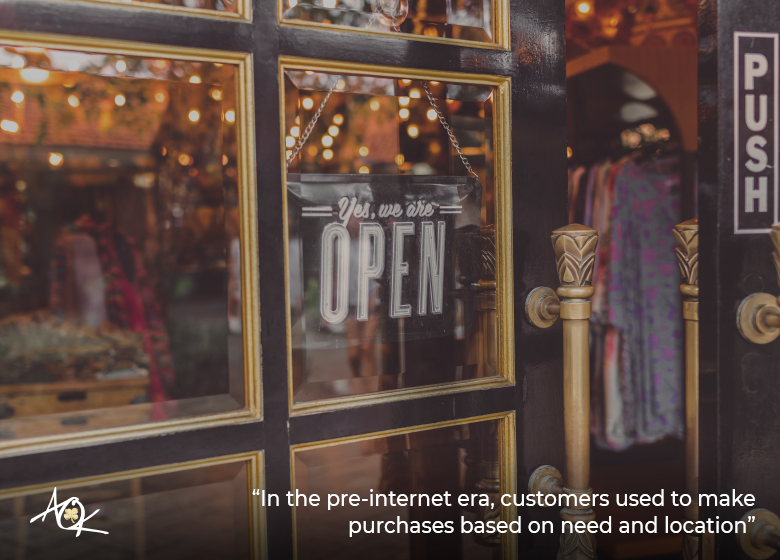
They’re not going to all be at the same place in the decision-making process, and no two visitors will be the same.
So, how do we understand this?
We must have an understanding (or at least a very good guess) of their state of mind at every step.
The AOK Game Theory Matrix describes this journey in four stages:
- Cold: Contact
- Warm: Consider
- Hot: Convert
- Converted: Care

Your job as a marketer is to try to figure out what’s making them “click” (literally and figuratively) at each stage of the journey from cold to converted and target campaigns accordingly.
So What Exactly is Cold Traffic?
At the cold traffic phase of the journey, you must assume that people are completely unfamiliar with your product — they’re brand new, so how do you want to make your first impression?
We can equate this step to coming into a city that we’ve never been to and looking for food. You don’t know which restaurants are there; you’re just looking for “a place to eat.”
This requires homing in on a problem or need that they have, and then figuring out the best way to make your brand known as something that can meet their need, with the end goal at the hot / conversion phase being to exceed their expectations enough that they become a loyal customer.
If you were to offer a necessary and basic storefront service in a small town — for instance, a grocery store or a barbershop – you’d get foot traffic based on the mere fact that people in the town would a) be in close proximity and b) actually “need” what you have to offer.
But today’s consumers are making choices more and more based on a company’s digital presence.
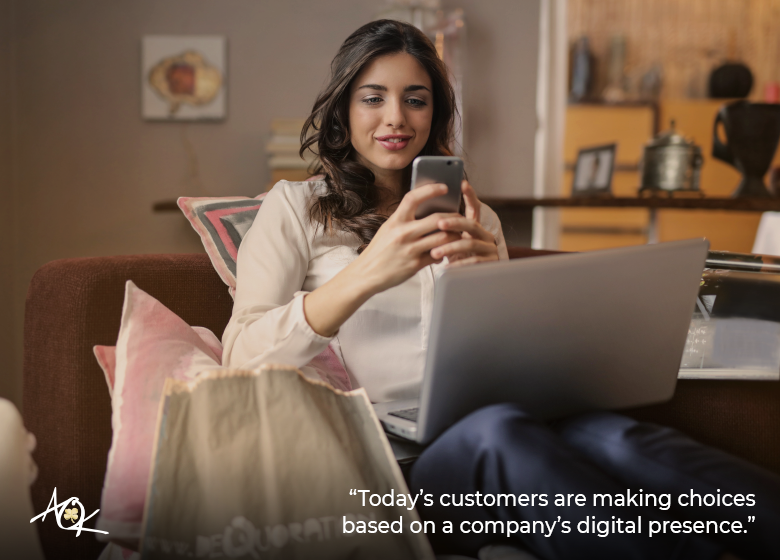
How you get your attention will depend on your digital strategy. And whether or not they “need” a given product is becoming less and less of an issue because they can access more and more goods and services on a non-local basis and at the touch of a button.
But, there’s still a basic foundation of advertising to bear in mind: they may not even know that they need a certain product, so it’s up to you to make them think that it’s worthwhile to buy.
The First Step: Define the Goal
At this phase, your main goal is to make contact with your customer. They need to see and know your brand – not just “see” it in passing but also really take notice. In the online world, this might mean that you have something like 3-5 seconds to make an impression.
You have the opportunity to share everything about your product or service, but it must be done strategically to catch their attention. This is a crucial step where buyers first learn about exactly what you have to offer, your reputation in the industry, and where you stand in the digital marketplace.
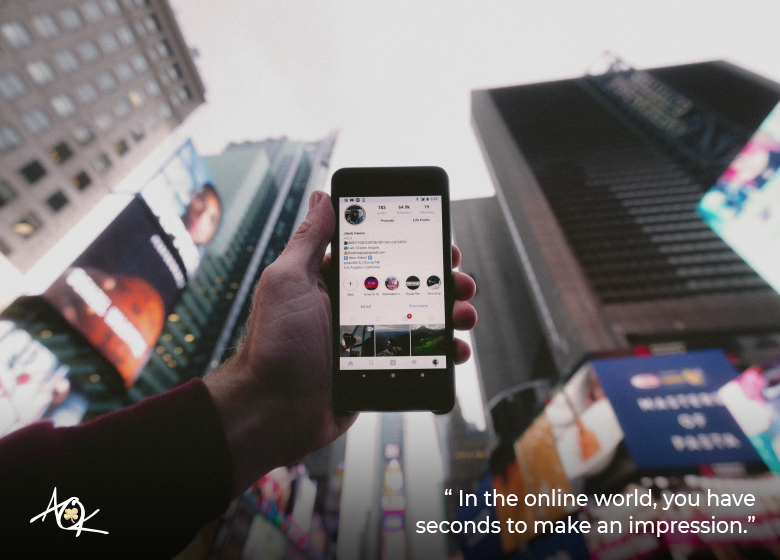
Who is the Audience?
With cold traffic, you’re really looking at the broadest possible audience. You need to assess who you can realistically reach – so this is anyone who can buy from you and would need the service. This will probably be narrowed down to very basic demographics – for instance, focusing on an age group or a gender, depending on your product.
Though you will need to have some sense of your general demographic, there’s no real targeting here – you can think of it as casting the widest possible net.
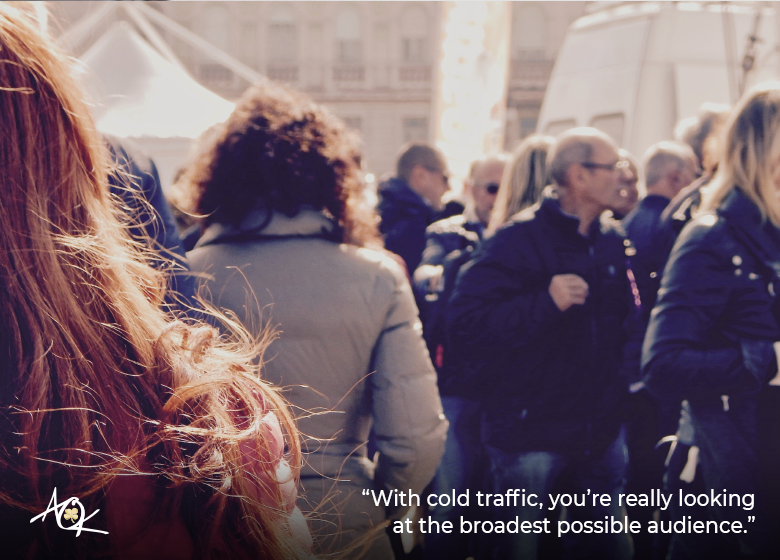
Cold Traffic is the Widest Possible Market
Your market is really anyone who may potentially buy from you. At this point, you don’t have enough information to start targeting, so you make a loose guess based on some information that you already know.
Developing Mindshare at the Cold Traffic Phase
When we say mindshare, we are referring to creating awareness about your brand and product. The purpose here is to build brand awareness so that it stands out amongst competitors. An ideal scenario is that your brand would be identified with the product itself. So, instead of saying smartphone you say “iPhone” (Apple) or instead of saying laptop you might say “MacBook.” Band-Aid, Kleenex, and Tupperware are other examples of companies with strong mindshare.
Messaging to Build Awareness
Your digital content is going to be key for building brand awareness and it’s important to remember that at this phase of the journey, you want the buyer to discover your brand. They’ll be interacting with you, likely through social media, and they might come across your website in their online shopping journey.
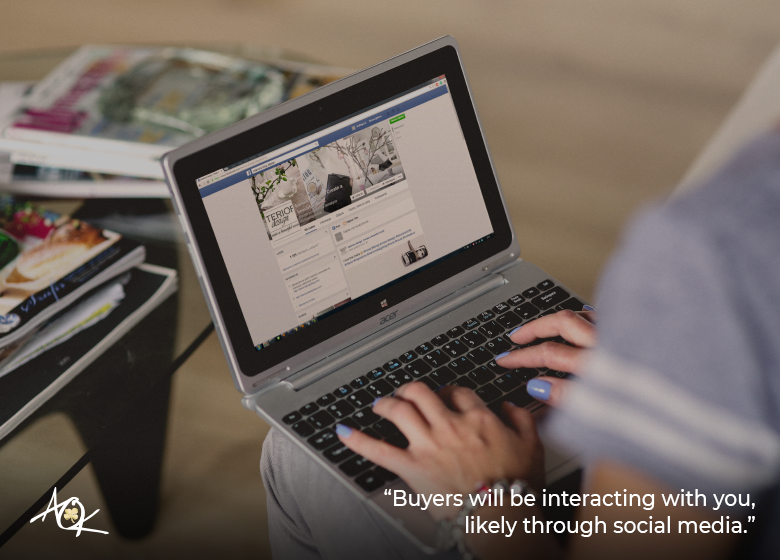
You want to focus on driving awareness and acknowledging the interests of buyers so that you can continue to easily engage with each other.
What Marketing Platform Should be Used?
In this phase, you’re likely going to focus mostly on social media (including video) and display ads or banner ads in order to help possible buyers learn more about what you have to offer and how your business stands in the context of the industry. This is when people will be initially exposed to your brand or business, and therefore you are building brand awareness.
You’ll want to ensure that you clearly show your unique value through providing useful content at this phase. Examples of high-value content might be:
- Sharing “how-to” type blog or demo video on your Facebook page
- Ensuring that user testimonials are clear on your landing page
- Guest blogging on a high-traffic site to show authority in your field
- Depending on your product, you want to “show” not tell — so for instance, a digital marketing company that specializes in creative web design should have a remarkable and unique website for themselves that speaks to their brand
- Sharing a story about what makes your brand unique
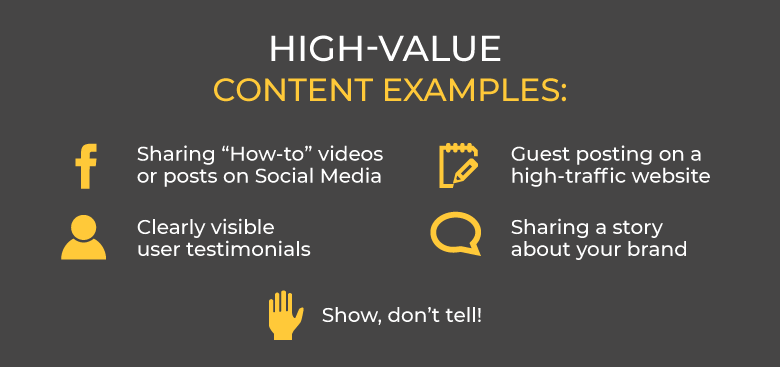
Cold Traffic Measurement
Design key performance indicators (KPIs) for this stage of the journey not around purchases but actions – so focusing on the number and percent of actions will be crucial. Your KPI choices should reflect how much cold traffic you are acquiring, and then how many have the potential to move to the next phase(s).
A few examples of good KPIs to focus on include:
- Social media commenting (conversation)
- Number of social media shares (amplification)
- Number of “likes” (applause)
- Brand potential awareness
- Percent of visits that are brand new
- Recency and frequency
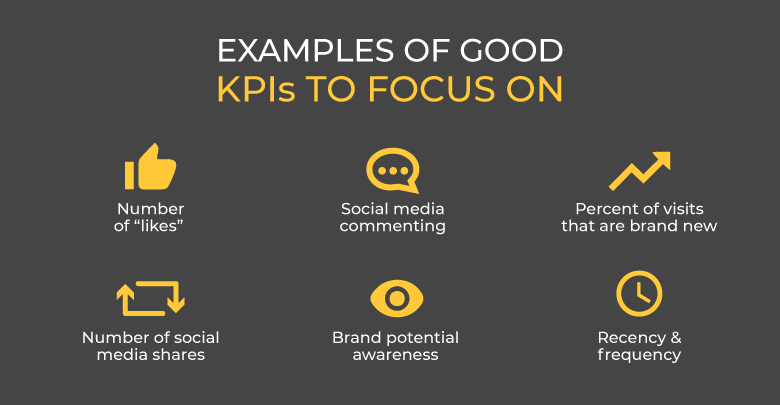
Elevate the Customer Experience
At this point, you’ll want to focus on three aspects of the customer experience: inspire, entertain, and inform. Remember, you’re not making a sale at this point, you’re just building awareness and creating a connection.
Try to find something to share with them that is relevant to your product but they may not already know – you can use an informative explainer YouTube video, for instance, focusing not so much on your product, but a need that your product can fulfill.
Your first point of contact is critical because that sets the framework for the rest of the buying process – if you don’t “catch” them at this phase, it’s unlikely (though possible) you’ll see them later. This may very well depend on how you differentiate yourself from your competitors.
So what you need to think about through each step is the conversation that you are having with the customer:
- What are you offering that is of value to them?
- How do they value it?
- How does it make them feel better about their lives?
- What does your brand do for them?

Always do your best to put yourself in their shoes and don’t lose sight of the relationship-building aspect of each step. From here, customers are guided to the next step in the matrix; warm traffic.
About The Author
Marketing Team
The AOK Marketing Team is a diverse group of amazing individuals driven to help all of our clients succeed. Great people are everywhere, and we believe that people should control their workday, their work environment, and where they live. We have team members in 9 countries: United States, Canada, Egypt, Belgium, Ireland, Australia, India, Pakistan, and Hong Kong.
How can we help you?



